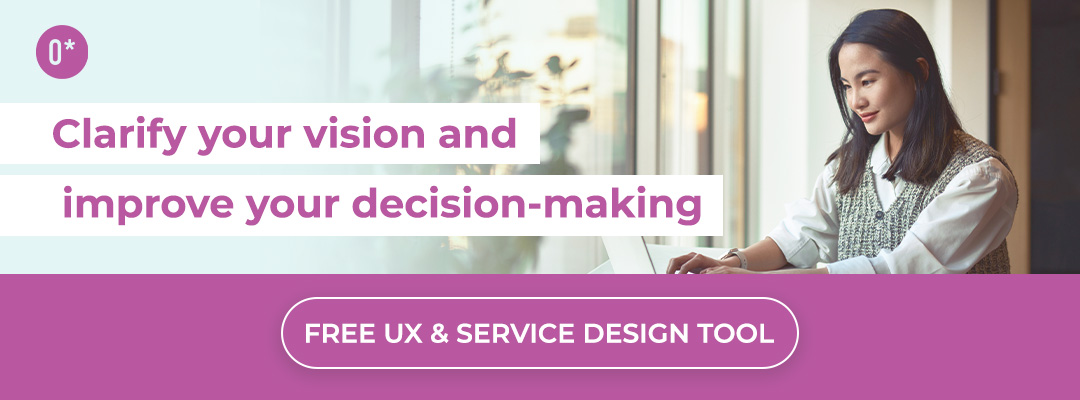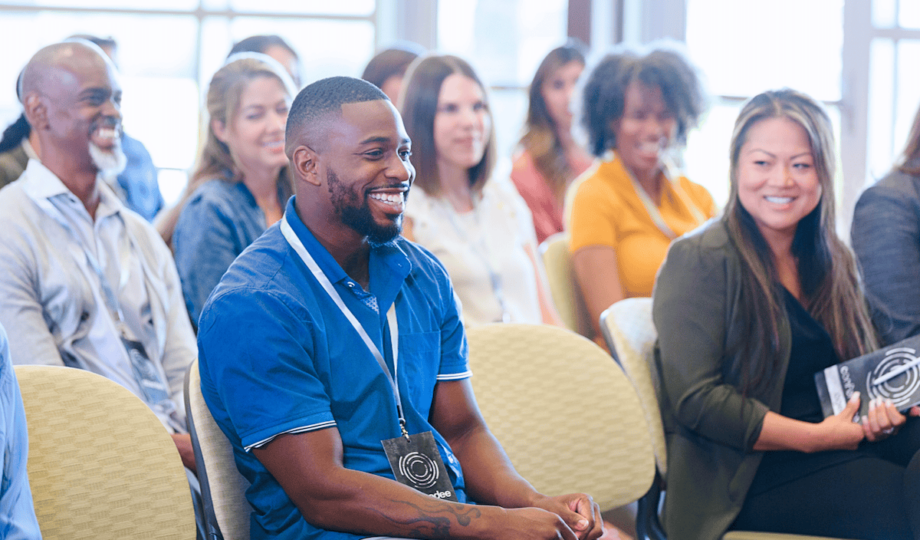You may think that because you have an in-house team of UX designers (and if you’re lucky, UX researchers) you don’t need the help of an external consulting agency or firm to understand your customers and find new opportunities. Well, that’s not always entirely true.
Most SaaS companies (software, e-commerce solutions, etc.), whether established or in the start-up phase, vary in their UX maturity. In some cases UX teams are relegated to only visual design, with not a lot of impact or involvement in product development, whereas other companies will have design and research teams deeply involved in product development, including usability testing, wireframing, product conceptualization, and so on.
Whether a UX team makes things “look pretty” or are more ingrained in product development and testing, chances are they may be completely swallowed up with R&D and managing engineering requests. This leaves them with little time to do exploratory research to uncover hidden/unmet customer needs––the kind of research that digs deep to find out what’s working and what’s not––and reveals new opportunities to delight your customers and blow competing solutions out of the water. Of course, we are a little biased in this regard… *ahem* Outwitly is a consulting firm — but this is something that we have encountered time and time again with our tech clients.
Not to mention that, according to a Forrester study, every $1 that’s invested in UX returns $100. This is equal to a return of 9,900%. Investing in your UX with an external agency is therefore worth every penny.
There are a few key reasons for hiring external consultants to conduct UX research and design strategy.
Unbiased UX Research
You may not be uncovering a true picture of your customer experience when conducting research in-house for three main reasons:
-
Users and customers––who are sometimes unhappy––might feel some kind of obligation to say “nice” things about a product or service when they are speaking to the team who literally designed it (or had a hand in designing it).
-
When interviewing very unhappy customers, a need to “save the sale” can sometimes interfere with the actual user research. Instead of focusing on improving the user experience and learning more about the customer’s unmet needs, there can be a tendency to escalate the customer’s case to the sales department instead, putting your UX team in a precarious position as company representatives.
-
Doing research in-house usually involves different stakeholders and many opinions. It can sometimes be very difficult for internal UX teams to facilitate meaningful top-down discussions and stakeholder interviews with their own bosses and executives.
Capacity and Time
When you have new products/solutions being released and you’re trying to keep up with quarterly KPIs, your UX resources might be limited. It might be impossible to dedicate an entire design research or human-centered design (HCD) engagement to, let’s say, conduct a 30-day diary study, user interviews, survey, and co-design workshops, and then deliver an end-to-end customer journey map illustrating why your customers are abandoning your product for the competition. At the same time, your UX team might be inundated with engineering requests, feature updates, and usability testing. An external agency can help speed up this UX research process to support the hard work already underway.
UX Research Skill Set
When building a UX team for a SaaS platform, the most common hires we usually see are UX designers, UI designers, mobile designers, web designers, graphic designers, and possibly user researchers–– companies are usually not thinking of the more “strategic” skill sets that can be embedded across several business areas. That said, conducting human-centered design research for the purpose of identifying challenges, goals, and unmet customer needs, mapping out customer journeys over time, and turning research findings into actionable insights DO require a high degree of strategic thinking that not all “pure” UX designers and researchers have. And for the team members who do have this strategic skill set…well, as we mentioned above, their time and capacity might be maxed out.
This is where consulting firms can step in. External agencies that provide service design, design research, and/or design strategy expertise, coupled with strong domain knowledge of what will work from a technology and design perspective, can manage a company’s diverse business needs and stakeholder perspectives. These firms can uncover customer/user needs to deliver an action plan that will improve customer satisfaction and retention, offering innovative recommendations that work.
Common Fears & Myths for Business Teams
Naturally, there are many fears and preconceived ideas (myths) around what it means to bring in an outside team to deliver UX research and/or design strategy. Here are four of the top concerns we hear most often from prospective clients, and some techniques we use to resolve them.
1. “My UX Team will feel threatened.” These emotions generally arise when the UX team is not involved in the decision to hire an external agency in the first place. If you’re a UX director making this decision, you’re already in the driver’s seat. But if you’re a VP of Marketing, Product, or an adjacent department, communication with your UX lead is key. An external agency should be seen as an extension of your UX team, and not a replacement. This process includes:
-
-
Involvement: Include representatives from the UX team in the key project group or at review meetings so they are always in the loop. Introduce the teams so the agency has easy access to the UX team should they need any guidelines or previous research.
-
Communication: Explain clearly to the UX team and other relevant staff why the company is deciding to use an external firm.
-
Endorse: Emphasize what a big opportunity this is for the UX team, and how it endorses the great work they have already done. Explain that the company clearly sees value in UX work, maybe more than ever before, thanks to them.
-
2. “It’s too expensive.” As we know from Forrester, return on investment (ROI) for UX work is exceptionally high. Instead of wasting valuable time and money designing and developing a product only to later find out that customers aren’t happy with it, it’s much less expensive (and therefore, less risky) to do the research upfront, test products and services, iterate with end-users, and pinpoint strategic opportunities for meeting customers’ unmet needs. As well, what may seem like a big expensive design research project can normally be broken out into smaller phases according to a company’s budget and timeline.
3. “I’m afraid of letting an outsider talk to my customers!” We hear this one all the time! In particular, sales and account representatives who have close relationships with customers are afraid of introducing a third-party that will ask “scary” questions like “what’s going wrong? What are your challenges? What could be improved?” However, we’ve found that doing this type of research with customers actually HELPS build brand loyalty. It demonstrates that the company CARES about its customers, and that the company is actively seeking to improve their customer experience. Not to mention that design researchers are professionally trained to be respectful, personable, and good listeners, and we know how to ask questions that encourage people to feel comfortable and open up. Your customers will thank you for asking them!
4. “Research should be handled by the marketing team.” This concern is both true and false. Human-centered design research and marketing research are both important, and both have their place in business, but they also have different goals and distinct methodologies, and the end results can be quite different. On one hand, market research typically explores attitudes, opinions, and broad insights across a large group to identify what customers are buying or what they want to buy. Design research, on the other hand, seeks to understand human behaviour, unspoken needs, challenges, and tries to capture a realistic picture of the “current state” in order to make improvements and find novel ways of designing products and services. The end goal of design research is to make the user’s experience easier, more efficient, and meaningful.
5 Key Benefits to Hiring a UX Consulting Firm
We can’t speak for every agency out there, but most well-run service design and UX consulting firms (like Outwitly) will offer:
-
Focus: You’ll have a team solely dedicated to your project. They won’t be distracted by other requests coming in from different departments or fighting fires––they will focus entirely on the task at hand.
-
Efficiency & Responsiveness: Most professional consulting firms will work efficiently (afterall, time equals money) and they’ll likely be highly responsive. Our reputations matter. As our customers, making you happy is our top priority.
-
Expertise: Consulting firms are domain experts: they know what they’re doing, and they’ve done these types of projects time-and-again. Normally, you can rest assured that the firm you’ve hired can do a great job, without lengthy interviews or a complex HR process. Of course, not all agencies are created equal, and you should certainly do reference checks and ALWAYS ask for portfolio pieces (in this industry, they can really tell you a lot). It shouldn’t be a question of “do they know what they are doing?”, but “do we like them?” At the end of the day, you want to work with people you like. Domain knowledge and expertise are a given.
-
Insight: A full-scale human-centered design and research engagement, where you are getting feedback from real customers, observing them interact with your products, and interviewing them one-on-one, will inherently reveal unmet needs and insights, and will identify new opportunities to keep your customers happy and engaged.
-
Action: Too often research findings can fall flat. The final reports are barely read, and they aren’t created in such a way that clearly lays out design recommendations, with a prioritized plan that fits into the business. One major benefit to hiring an external team is that they will consider not only what new features or products would work for the user/customer, but also how the company can actually take action on these new opportunities. Agencies have the time to create implementation plans and really FINISH OFF the project with beautiful customer journey maps, insight reports, and frameworks for taking action that will live on after the engagement is done.
We really recommend exploring the option of hiring an external consulting firm to assist with UX research and design. A strong consulting team will get to know your customers so that you can develop the features and products they need quickly, thereby increasing customer retention and satisfaction. External firms can also help you build a concrete action plan to boost your revenue with practical and innovative product/service solutions, all while delivering results on time and on budget.
To learn more about Outwitly’s consulting and UX services, visit our What We Do page or Get in Touch today!





